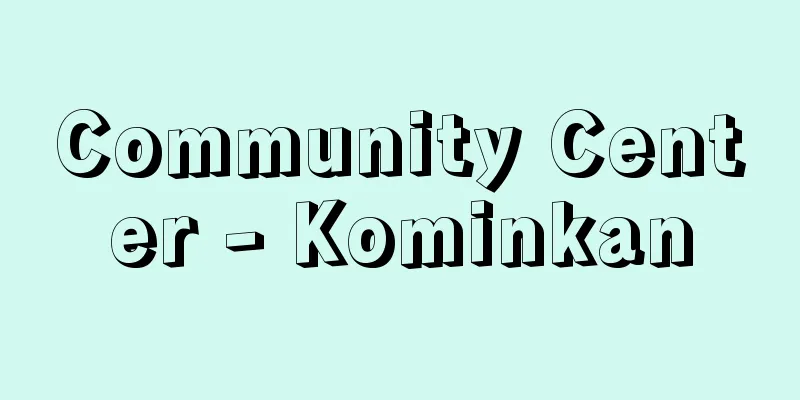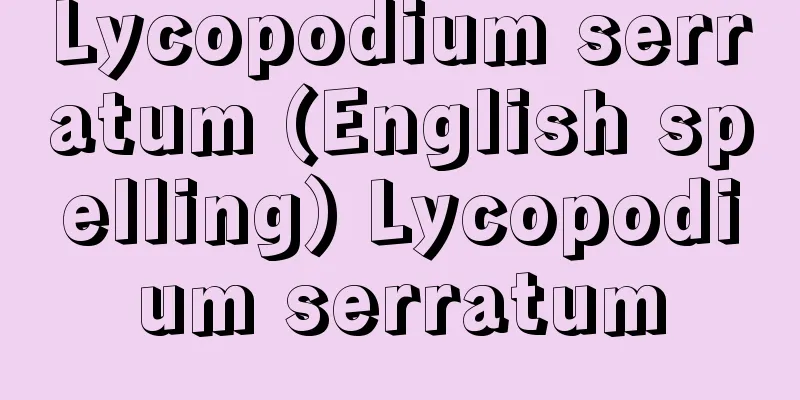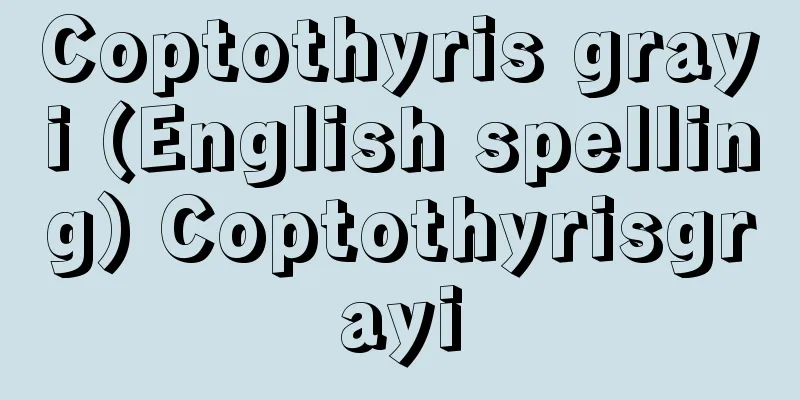Community Center - Kominkan

|
A community center is a local educational facility that carries out educational, academic, and cultural activities. There were facilities called Kominkan before the Second World War, but what triggered their spread nationwide as a social education facility was a notice issued by the Vice Minister of Education in July 1946 (Showa 21), which encouraged each town and village to establish Kominkan. The Social Education Law enacted in 1949 included provisions regarding municipal and corporate Kominkans. It states that the purpose of Kominkans is "to carry out various educational, academic, and cultural activities that are relevant to the actual lives of the residents of a city, town, village, or other designated area, thereby improving the culture of the residents, promoting their health, and purifying their sensibilities, and contributing to the promotion of lifestyles and social welfare." Initially, there were many so-called "open-air community centers" that lacked facilities and carried out activities through local organizations, as well as community centers attached to schools, and community centers were focused on their functional functions, but gradually the construction of facilities progressed and they came to be seen as typical community education facilities. Community centers owned by local neighborhood associations rather than by municipalities are not legally called community centers, but are called autonomous community centers, and are similar to community centers, but the 1959 amendment to the Social Education Act added provisions for branch centers, opening the way for them to become part of public community centers. At the same time, "Standards for the Establishment and Management of Community Centers" were enacted, indicating that community centers should be established taking into consideration elementary school districts, junior high school districts, etc. Community centers' activities include holding lectures and classes, providing materials, holding various meetings, and making their facilities available for use by residents, and they have been attracting attention as a place to foster the power of resident self-governance. The provision that "the Board of Education must hear the opinion of the Community Center Management Council, which is made up of resident representatives, before appointing the director of the center" was also related to the fact that, prior to the law, the director was selected by a publicly elected community center committee. However, this provision was abolished in 1999 (Heisei 11) as part of deregulation, and the "Standards for the Establishment and Management of Community Centers" were also simplified. As of 2008, there are approximately 17,000 legally established community centers nationwide, exceeding the number of junior high schools. The total staff is approximately 52,000, including center directors, of which 17,000 are community center managers, averaging about one person per center. This, along with the fact that the qualifications for community center managers, who are professional staff, are not stipulated by law, is also a problem. The inadequate community center system is particularly noticeable in large, long-established cities. [Uesugi Takazane] "Community Centers, Libraries, and Museums," edited by Kobayashi Fumito (1977, Aki Shobo)" ▽ "Reprint of "Commentary on the Social Education Law: Construction of Community Centers," written by Teranaka Sakuo (1995, Kokudosha)" ▽ "Creating Modern Community Centers: 50 Years of Progress and Prospects for Community Centers," edited by the Japan Society for Social Education (1999, Toyokan Publishing)" ▽ "Community Center Project Q&A," edited by Sakai Satoshi and Yamamoto Yoshihiro (2000, Gyosei)" ▽ "Community Center Studies Association, edited by the Japan Society for Community Centers, Community Center and Community Facility Handbook (2006, Eideru Research Institute)" [Reference items] | |Source: Shogakukan Encyclopedia Nipponica About Encyclopedia Nipponica Information | Legend |
|
教育・学術・文化に関する事業を行う地域社会教育施設。第二次世界大戦以前にも、公民館と称する施設があったが、社会教育施設として全国的に普及するきっかけになったのは、1946年(昭和21)7月、当時の文部次官通牒(つうちょう)で、各町村への設置が促されたことによる。1949年に制定された社会教育法では、市町村立と法人立の公民館についての条項が設けられた。そこでは、公民館の目的として「市町村その他一定の区域内の住民のために、実際生活に即する教育、学術及び文化に関する各種の事業を行い、もって住民の教養の向上、健康の増進、情操の純化を図り、生活文化の振興、社会福祉の増進に寄与すること」があげられている。 当初は、施設を欠き地域組織で活動を展開する、いわゆる「青空公民館」や、学校に併設される公民館も多く、機能としての公民館が目だったが、しだいに施設建設も進み、地域社会教育施設の典型とみなされるようになった。市町村立でなく地域の自治会等で所有する公民館は、法制上の公民館ではなく、自治公民館などとよばれ、公民館類似施設であるが、1959年の社会教育法改正で分館の規定が加わり、公立公民館の一部となる道が開かれた。同時に「公民館の設置及び運営に関する基準」が制定され、公民館は小学校区や中学校区等を勘案して設置されることなどが示された。 公民館の事業としては、講座・学級の開設、資料の提供、各種集会の開催などのほか、その施設を住民の利用に供することなどがあり、住民自治の力をはぐくむところとして注目されてきた。「教育委員会は、館長の任命に関して、あらかじめ住民代表等からなる公民館運営審議会の意見を聞かなければならない」という規定が設けられていたのも、法以前に、公選による公民館委員会によって館長の選任が行われることになっていたことが関係している。ただし、この規定は1999年(平成11)に、規制緩和の一環として廃され、「公民館の設置及び運営に関する基準」も簡素化された。 2008年現在、法に基づく公民館は全国で約1万7000あり、中学校の数を上回る。職員数は館長を含めて約5万2000人で、そのうち中心となる公民館主事は1万7000人と1館あたり平均1人程度である。専門職員である公民館主事の資格要件が法で定められていないこととあわせて問題になっている。とくに古くからの大都市で公民館体制が不十分なところが目だつ。 [上杉孝實] 『小林文人編『公民館・図書館・博物館』(1977・亜紀書房)』▽『寺中作雄著『社会教育法解説 公民館の建設』復刻版(1995・国土社)』▽『日本社会教育学会編『現代公民館の創造――公民館50年の歩みと展望』(1999・東洋館出版社)』▽『坂井知志・山本慶裕編著『公民館事業Q&A』(2000・ぎょうせい)』▽『日本公民館学会編『公民館・コミュニティ施設ハンドブック』(2006・エイデル研究所)』 [参照項目] | |出典 小学館 日本大百科全書(ニッポニカ)日本大百科全書(ニッポニカ)について 情報 | 凡例 |
>>: The Imperialization Policy
Recommend
Bougainvillea - Bougainvillea
A winter-hardy shrub or semi-climbing shrub of th...
Hairpin of Love - Hairpin of Love
...It is also called Erica False because its leav...
non-resident
...A term for a sales slip. Resident, non-residen...
Accion Española - Accion Española
…After experiencing an ideological crisis during ...
Home video game console - KATEIYO GAME KI
《 Consumer game machine 》A general term for a comp...
Erimo [town] - Erimo
A town in Horoizumi District, Hokkaido. It include...
sketch
…Drawings can be broadly divided into the followi...
Qutlugh Boyla (English spelling) Qutlugh Boyla
…However, the Tenguri Khan, who took the throne o...
Goette's larva
… They are hermaphrodites, with both male and fem...
Millet rice cake
A famous confectionery made and sold by Awamochi T...
Jesenská, M.
…Based on these anguish, he wrote most of Der Pro...
First-class - Ichiryu
〘noun〙① one bloodline. a clan. a certain clan. the...
Superplasticity
…Under certain conditions, a material can undergo...
Oston Hemigalus - Oston Hemigalus
...Three species are found in the Malay Peninsula...
Encyclopedia - Hyakkkajiten
An encyclopedia that provides explanations of all...




![Amanu [island] - Amanu](/upload/images/67cf3a77106da.webp)




